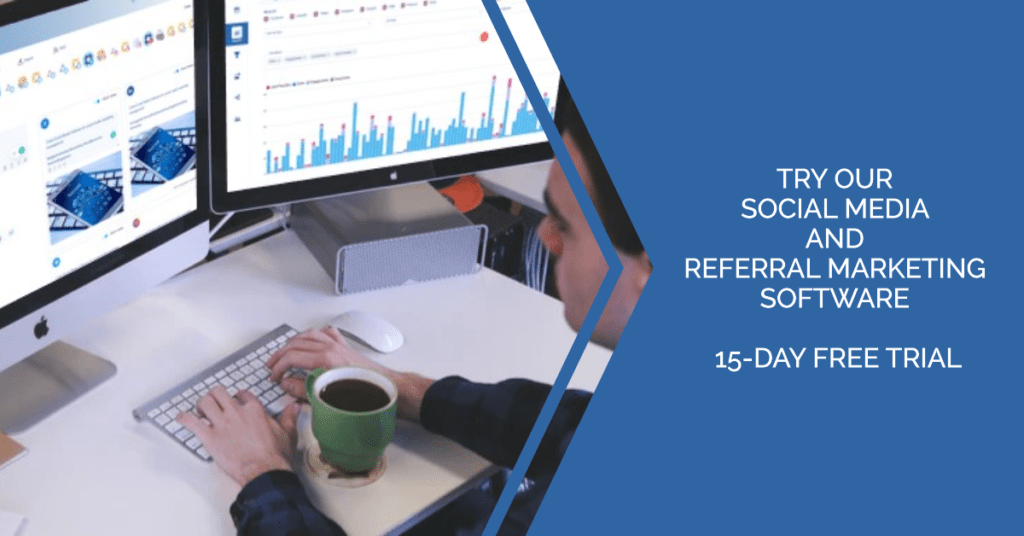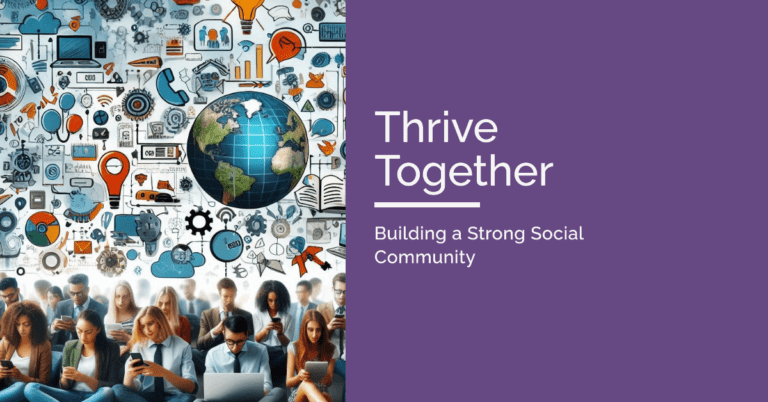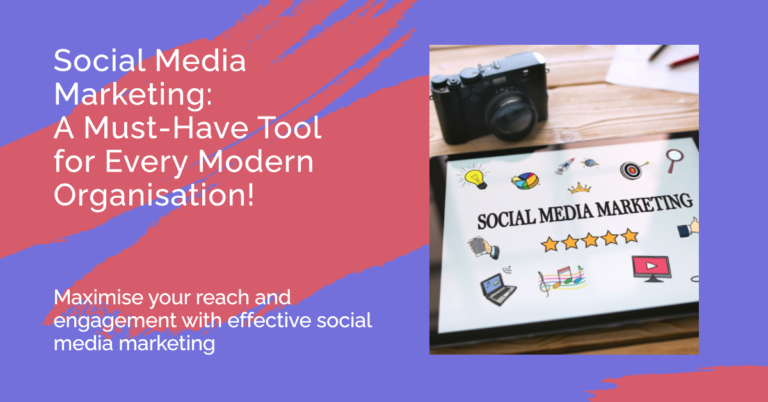Today, we live in a digitally driven economy, and businesses leverage social media as a fundamental part of their growth strategies. With billions of users on social media platforms daily, the potential for reaching new and engaged audiences is massive. However, competition is fierce, and traditional organic methods are often insufficient to create a lasting impact or generate significant brand awareness. As a result, companies are increasingly turning to paid social media strategies to capture attention, drive engagement, and convert new customers.
This guide explores the essential elements of an effective paid social media approach. It provides detailed insights into how businesses can balance various factors to create the most effective and growth-oriented social media strategies. This guide will outline defining objectives, selecting platforms, identifying and segmenting target audiences, allocating budgets effectively, and creating compelling content. We will explore the nuances of ad placements, timing, and metrics, emphasising that while paid social media brings a lot to the table, it does come with challenges, including budget constraints, privacy considerations, and the need to integrate paid strategies with organic efforts. We’ll also investigate how to navigate these issues, analyse trade-offs, and build a balanced approach that maximises the benefits of paid social media while supporting a well-rounded overall social media strategy.
Understanding Paid Social Media Marketing and Its Essential Role in Social Media Marketing
Paid social media uses paid advertising options on social platforms to promote content, products, or services to specific audiences. It contrasts organic social media, which relies on unpaid methods for building engagement and reach, often through regular content sharing, follower engagement, and community management. While organic efforts remain valuable for building trust, fostering loyalty, and engaging directly with followers, they are often limited in reach and can be slow to gain traction. Social media marketing in the current landscape depends on combining both organic and paid approaches to achieve the best outcomes.
Paid social media is increasingly recognised as a critical component of modern social media marketing. It enables brands to overcome the limitations of organic reach, target particular audiences, and gain insights into customer behaviours and preferences. With sophisticated targeting and analytics tools now available across major platforms like Facebook, Instagram, X, and LinkedIn, businesses can craft precise social media strategies that align with their unique goals, whether those goals focus on brand awareness, lead generation, customer acquisition, or retention. By using paid media to amplify content and achieve visibility strategically, brands can reach more people and the right people. This amplification capability is essential in a world where social media feeds are crowded with content, and algorithms tend to prioritise paid content, making it harder for organic posts to reach new audiences.
The Key Elements of an Effective Paid Social Media Strategy
Crafting an effective paid social media strategy involves several interconnected steps, each requiring careful thought and adjustment to maximise impact. Below are the primary components of a successful paid social strategy and how they contribute to achieving marketing goals.
Defining Clear Goals and Objectives
Every successful paid social media advertising begins with clearly defined goals and objectives. Without clear goals, it becomes challenging to determine success or evaluate return on investment. Goals will vary depending on the business, industry, and target audience, but common objectives include increasing brand awareness, driving website traffic, generating leads, boosting sales, and promoting customer retention. For instance, a company seeking to drive brand awareness may prioritise high-reach ad formats and invest in placements that guarantee high visibility, such as Instagram Stories or Facebook video ads. On the other hand, a brand focusing on lead generation might benefit more from ads that lead users to sign-up forms or other call-to-action options that encourage social media user interaction.
Well-defined objectives shape the entire approach to a paid media strategy, from the creative direction of ads to the selection of social media platforms and the targeting options used. This goal-setting also influences budgeting decisions, clarifying the investment each objective requires and which key performance indicators (KPIs) will be used to track success. Additionally, setting clear goals allows precise measurement of a campaign’s effectiveness. By identifying specific outcomes, brands can make data-driven adjustments to improve results rather than relying on guesswork or intuition.
Selecting the Right Social Media Platform
Not all social platforms serve the same purpose or audience, and selecting the most appropriate social media channel for a campaign is critical to maximising impact. Each social media platform has unique strengths and user demographics, so businesses should align platform selection with their target audience and goals. For example, Facebook offers a broad reach and extensive targeting options, making it suitable for a wide range of campaigns, from brand awareness to conversion-focused ads. Instagram, which is heavily visual and popular among younger audiences, is ideal for influencer marketing partnerships and visually driven brands. LinkedIn, meanwhile, is optimal for B2B marketing and professional services, as its user base primarily consists of professionals and industry decision-makers.
Choosing the right platform also involves understanding each platform’s unique ad formats and features. Platforms such as Facebook and Instagram offer diverse ad types like carousel ads, Stories, and interactive posts, which can help enhance engagement. In contrast, TikTok’s dynamic, video-first platform allows brands to connect with Gen Z and Millennial users through short, engaging videos that can go viral. Selecting the right platform ensures that a brand’s content resonates with the audience most likely to engage with it, making it a fundamental part of a winning paid social strategy.

Target Audience Analysis and Segmentation
A thorough understanding of the target audience is foundational to any successful social media marketing strategy. While platforms like Facebook and Instagram provide powerful targeting tools, analysing and segmenting the audience before launching any paid social media campaign is essential. This involves studying demographic data, interests, online behaviour, and purchase patterns. Tools like Sprout Social and Facebook Audience Insights allow marketers to gain insights into their audience, what content resonates with them, and where they are most active. Effective audience segmentation enables businesses to tailor ad content to different groups, ensuring each segment receives relevant messaging.
By categorising audiences into segments based on age, location, income level, and interests, brands can deliver personalised ads more likely to result in conversions. For instance, a fitness brand might target young, fitness-oriented individuals with lifestyle-focused ads on Instagram while focusing on a different message for middle-aged audiences on Facebook. Precise audience targeting minimises wasted spend and increases the likelihood that each ad impression generates meaningful engagement or conversions. This step is essential for improving ROI and building relationships with the audience, as tailored messaging is more likely to foster a connection and drive loyalty.
Budget Allocation and Bidding Strategy
Allocating an appropriate budget and selecting the right bidding strategy is critical to a successful paid social ad campaign. Social media platforms allow advertisers to set budgets daily or campaign-longly, providing flexibility to adjust spending based on performance. Deciding on a budget depends on several factors, including the goals of the campaign, the platform chosen, and the estimated cost per objective. For example, a brand to maximise brand awareness may opt for a high daily budget to reach as many people as possible within a short timeframe, while a business focused on lead generation may prioritise a smaller, more targeted budget with a high CPC (cost-per-click) strategy.
Regarding bidding, social platforms offer multiple options, such as CPC, CPM (cost-per-thousand impressions), and CPA (cost-per-action). Choosing the suitable bidding model depends on the campaign goals and audience behaviour. CPC, for example, is typically effective for driving traffic to a website, as advertisers pay only when users click on the ad. Conversely, CPM may be preferable for campaigns focused on brand visibility, as it maximises impressions without requiring specific user actions. Regularly reviewing budget allocation and bidding strategy helps optimise spending and ensures that resources are used efficiently, minimising waste while maximising results.
Ad Creative and Content Development
Compelling, high-quality ad creative is essential to the success of any social media ad campaign. The creative encompasses everything from the visual design to the text, the call-to-action (CTA), and the overall messaging. Each element should align with the campaign goals, resonate with the target audience, and convey the brand’s unique value. For example, video content is highly effective on platforms like Instagram and Facebook, where users are drawn to visual, easily digestible content. Carousel ads and Stories, which allow for multiple images or videos in a single ad, can enhance engagement by showcasing various products or highlighting different features of a single product.
Tailoring ad creatives to the format and platform enhances the user experience and boosts engagement. For example, ads on Instagram should prioritise aesthetics, as users on this platform value visually appealing, high-quality images and videos. A Facebook ad, on the other hand, may benefit from more extended captions and more detailed information, given that users are often seeking both visuals and context. Dynamic and interactive ads, such as polls or question-based content, encourage user interaction and feedback, making them valuable for engagement-driven campaigns.
Optimising Ad Placements and Timing
Ad placement and timing significantly affect the reach and effectiveness of a social media advertising campaign. Placement refers to where the ad appears within a platform, such as the Facebook News Feed, Instagram Stories, or X’s main feed. Each placement type has different user interactions, and selecting the correct placement can increase visibility and engagement. Platforms like Facebook allow businesses to choose between automatic placements, utilising platform algorithms to maximise reach, and manual placements, where advertisers have complete control. Testing various placements helps identify the best results for a particular audience or campaign objective.
Timing is equally essential, determining when the target audience will most likely see the ads. By analysing peak activity times—such as weekday evenings or weekend afternoons—businesses can schedule ad releases to maximise engagement. This approach increases the likelihood that ads are seen and ensures that they reach users when they are most likely to interact. Additionally, time-based optimisation helps reduce ad fatigue, which occurs when users see the same ad repeatedly, resulting in diminished interest. Adjusting placements and timing based on performance data enables businesses to continuously refine their paid strategy and improve the overall effectiveness of their paid campaigns.
The Advantages of Paid Social Media Advertising
An effective paid social media campaign provides numerous benefits that enhance a brand’s reach, engagement, and return on investment. Some of the key advantages include:
- Expanded Reach and Visibility: unlike organic content, which is often limited to existing followers, paid social media allows brands to reach a wider audience outside their immediate community. This reach is invaluable for growing brand awareness and acquiring new followers or customers who may not have discovered the brand otherwise
- Precision in Targeting: one of the most significant advantages of paid social advertising is the ability to target ads based on a specific demographic, interest-based, and behavioural data. Platforms like Facebook and Instagram offer detailed targeting options that allow brands to connect with users who are most likely to engage with their content. This precision reduces wasted ad spend and increases the chances of meaningful interactions
- Real-Time Analytics and Measurable Results: paid social media provides access to real-time performance metrics, enabling marketers to track the effectiveness of each campaign component. Key metrics such as click-through rates, engagement, and conversion rates offer valuable insights into what resonates with the audience and which elements require adjustments. Analytics also allow for continuous refinement and optimisation, which is essential for improving ROI
- Increased Brand Awareness: paid ads amplify visibility, making it easier for new customers to discover a brand. Even if users do not immediately click on or engage with the ads, seeing the brand repeatedly can create familiarity and trust over time, which is crucial for establishing a strong brand presence
Challenges and Trade-offs in Paid Social Media Advertising
Despite its advantages, paid social media advertising has several challenges and trade-offs. Here’s an overview of some of the common obstacles that businesses encounter and strategies to overcome them:
Balancing Organic and Paid Efforts
A key business challenge is balancing organic social media efforts with paid strategies. While paid media offers faster results and greater reach, organic content is vital in building community, fostering loyalty, and nurturing long-term customer relationships. Organic posts enable brands to be authenticate with followers, addressing questions and concerns while encouraging genuine connections. For this reason, it’s essential to incorporate both paid and organic approaches, using paid ads to amplify content and drive traffic while investing in organic methods that build long-lasting customer relationships. A strong social media marketing strategy will leverage both methods to create a sustainable online presence that grows over time.
Cost and Return on Investment (ROI)
Ensuring paid social media campaigns yield a positive ROI can be challenging, especially for small businesses with limited budgets. Ad costs can vary significantly depending on audience size, platform, and competition, and some campaigns may require a substantial initial investment to yield significant results. To manage costs effectively, brands should monitor performance metrics and continuously adjust their strategies. Testing different ad creatives, placements, and target segments can help identify the most cost-effective approach. While investing heavily in ads for rapid results is tempting, prioritising careful tracking and adjusting spending based on performance will ultimately lead to a healthier return on investment.
Privacy and Data Concerns
With the rise of data privacy regulations, such as GDPR and CCPA, businesses must navigate stricter guidelines regarding audience targeting and data collection. Users are increasingly concerned about how their data is used, and brands that don’t handle customer data with care risk losing trust. Ensuring compliance with data protection regulations and respecting users’ privacy is essential to maintaining credibility and trust. Brands should prioritise transparency in data collection practices, giving users options to control their privacy settings. Businesses can build a trustworthy and ethical paid social media presence by balancing effective targeting and respecting user privacy.
Overcoming Ad Fatigue
Ad fatigue occurs when users become overly familiar with an ad, decreasing engagement and effectiveness. When the same users repeatedly see identical ads, they are more likely to ignore or block the content. This situation can be addressed by regularly updating ad creatives and experimenting with new formats to keep the audience engaged. Rotating ads, creating seasonal campaigns, and personalising content are ways to combat ad fatigue and ensure that users remain interested in the brand’s offerings. Refreshing content periodically boosts engagement and allows the brand to stay relevant in the fast-changing social media landscape.
Best Paid Social Media Strategies for Specific Marketing Objectives
Successful paid social media strategies differ based on the goals of each campaign. Below are several approaches tailored to various marketing objectives:
Increasing Brand Awareness
For a paid social campaign focused on building brand awareness, the primary goal is to reach as many potential customers as possible. High-visibility ad formats such as video ads and Stories are often effective for these campaigns, as they are immersive and engaging. Additionally, targeting broad audiences on platforms like Facebook and Instagram can help maximise reach. The focus should be on creating memorable content that captures attention and using simple but impactful CTAs to encourage brand recognition and exploration.
Generating Leads
Lead generation campaigns are designed to capture contact information and initiate a relationship with potential customers. Lead form ads on Facebook and LinkedIn are excellent for this purpose, as they allow users to submit their information without leaving the platform. This seamless experience increases the likelihood of conversion. Integrating email marketing can further enhance lead nurturing, helping brands stay connected with prospects through a comprehensive marketing funnel.
Driving Conversions and Sales
Paid ads that lead directly to product pages or e-commerce options are essential for businesses aiming to increase sales or conversions. Retargeting ads, which target users who have previously visited the brand’s website or social media pages, are particularly effective in driving conversions. Social commerce features, such as Instagram and Facebook Shops, simplify the buying process, allowing users to purchase products without leaving the platform. These conversion-focused campaigns are also a prime opportunity to use high-quality visuals and persuasive CTAs to motivate users to take action.
Improving Customer Retention
Customer retention campaigns target existing customers or those already engaged with the brand. Paid ads focused on retention highlight new products, exclusive offers, or loyalty programs that encourage repeat purchases. Retargeting existing customers and tailoring messages based on past purchase behaviour can foster loyalty and build a long-term relationship with them. Retention efforts are crucial for maximising each customer’s lifetime value, making them a valuable component of a holistic paid social media approach.
Tools and Resources for Enhancing Paid Social Media Campaigns
Various tools and platforms can assist marketers in creating, managing, and analysing paid social media campaigns. Some of the most popular options include:
- Facebook Ads Manager: Facebook’s built-in ad management tool provides detailed analytics, real-time performance tracking, and a range of ad customisation options. It is ideal for campaigns focused on the Facebook and Instagram platforms
- Google Analytics: while typically used for website traffic analysis, Google Analytics can also track social media campaign traffic and conversions. Linking social media campaigns to Google Analytics offers additional insights, helping marketers understand how paid social media impacts website performance
The Future of Paid Social Media: Trends and Emerging Strategies
The paid social media landscape will continue to evolve as new technologies and consumer behaviours shape how brands approach digital marketing. Key trends include:
- Increased Use of Artificial Intelligence (AI): AI-powered tools can analyse vast data to provide insights and optimise campaigns more effectively. AI can also enable more personalised targeting and ad creation, making campaigns more relevant and engaging
- Augmented Reality (AR) and Virtual Reality (VR): AR and VR technologies allow for highly immersive ad experiences, such as “try-before-you-buy” options for products like clothing or cosmetics. These interactive formats have already gained popularity on platforms like Snapchat and Instagram
- Voice Search Optimisation: as voice-enabled devices become more common, optimising paid social media content for voice search may become essential. By creating content that matches voice search queries, brands can reach users on new platforms and improve their overall digital visibility

Final Thoughts
Successful paid social media strategies require a thoughtful balance of creativity, data analysis, and strategic planning.
By understanding the strengths and nuances of each social media platform, carefully targeting the audience, and measuring campaign performance, businesses can make informed decisions that yield meaningful results.
The best paid social media strategies seamlessly integrate with organic social media strategy efforts, creating a cohesive and impactful presence that builds brand loyalty and drives growth.
Armed with the right tools and insights, businesses of all sizes can harness the power of paid social media to boost visibility, engagement, and long-term success.







